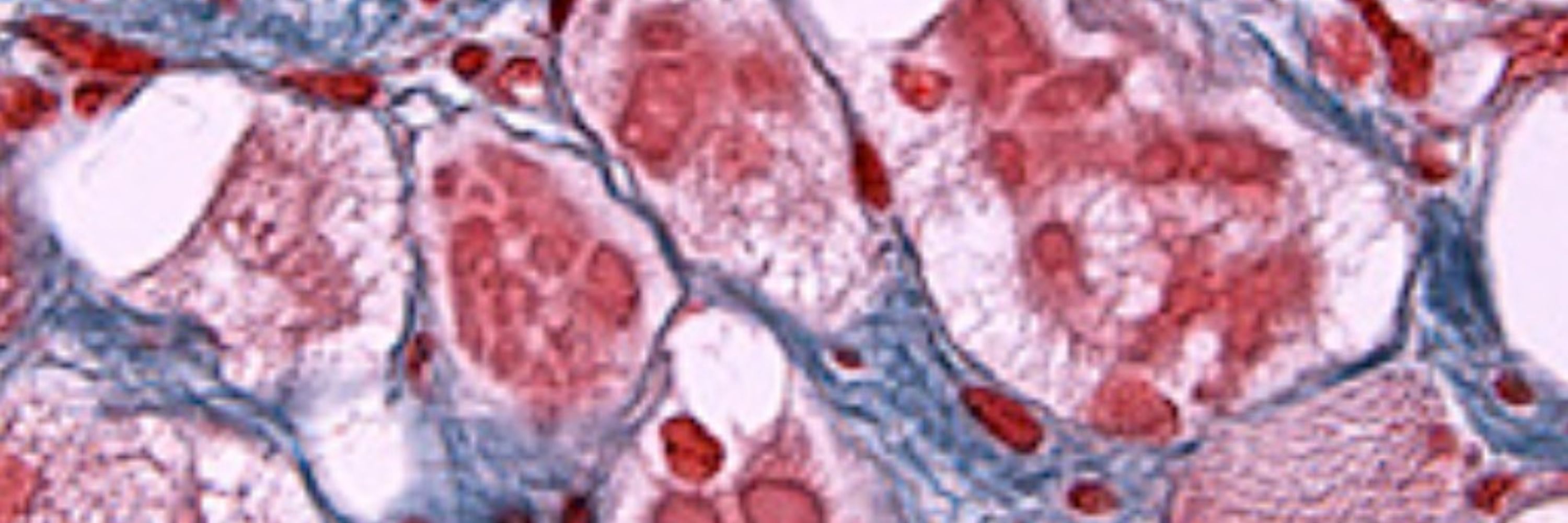
Vascular biologist

Our #AdvSci perspective😆
@rrust.bsky.social
@dominikusbrian.com
@lydenlab.bsky.social
#StemCellTherapy for #Stroke should be timed to a biomarker-defined “window of receptivity”, not just the thrombolysis clock
advanced.onlinelibrary.wiley.com/doi/10.1002/...
Voyager 2 grabbed it on 25 June 1979 when it was already down to 12 million kilometres and still closing fast.
photojournal.jpl.nasa.gov/catalog/PIA0...
Pic by NASA/JPL
🔭 🧪 #science
1/4

Voyager 2 grabbed it on 25 June 1979 when it was already down to 12 million kilometres and still closing fast.
photojournal.jpl.nasa.gov/catalog/PIA0...
Pic by NASA/JPL
🔭 🧪 #science
1/4
On 5 Nov. 2018 it slipped out of the Sun’s domain into true interstellar space.
Right now, Nov. 2025, it’s some 141.49 AU away — 21.17 billion km — the farthest thing humans have ever sent, and it’s still talking to us.
4/4
On 5 Nov. 2018 it slipped out of the Sun’s domain into true interstellar space.
Right now, Nov. 2025, it’s some 141.49 AU away — 21.17 billion km — the farthest thing humans have ever sent, and it’s still talking to us.
4/4
#protistsonsky 🧵
#protistsonsky 🧵
db/db🐭
Re-analysis of Human SkM #T2D #Sarcopenia transcriptomes
Hub genes: FGF9 BDH1 LDHA
#SciRep 2025
www.nature.com/articles/s41...

db/db🐭
Re-analysis of Human SkM #T2D #Sarcopenia transcriptomes
Hub genes: FGF9 BDH1 LDHA
#SciRep 2025
www.nature.com/articles/s41...
Read here about the secretion of extracellular (ex)RNA in plant–bacterial interaction.
🧪 #Science #Biology #Genetics
1- www.cell.com/trends/genet...
2- www.nature.com/articles/s41...

Read here about the secretion of extracellular (ex)RNA in plant–bacterial interaction.
🧪 #Science #Biology #Genetics
1- www.cell.com/trends/genet...
2- www.nature.com/articles/s41...
Great line-up of speakers. Send an email if you would like to meet at or around the conference.

Great line-up of speakers. Send an email if you would like to meet at or around the conference.
We’ll study #cellbio & #morphogenesis, focusing on organ sculpting and #chirality in #Drosophila.
I’ll soon hire my first #PhD student — feel free to reach out!
#juniorPI #Science #devbio

We’ll study #cellbio & #morphogenesis, focusing on organ sculpting and #chirality in #Drosophila.
I’ll soon hire my first #PhD student — feel free to reach out!
#juniorPI #Science #devbio
Here, Lauren H. Sansing & team report on changes of GLO1 with age & its association with calcium leak in degeneration, using mouse and macaque models: insight.jci.org/articles/vie...
Here, Lauren H. Sansing & team report on changes of GLO1 with age & its association with calcium leak in degeneration, using mouse and macaque models: insight.jci.org/articles/vie...
In rare diseases, the lungs often reveal what’s happening across the entire body, from molecular disruption to systemic complications.
Join Prof Dr Allan Lawrie (Imperial College London) and Dr Sterghios Moschos (Pulmobiomed).
🔗 Listen: youtu.be/8CQN9U2h388
In rare diseases, the lungs often reveal what’s happening across the entire body, from molecular disruption to systemic complications.
Join Prof Dr Allan Lawrie (Imperial College London) and Dr Sterghios Moschos (Pulmobiomed).
🔗 Listen: youtu.be/8CQN9U2h388
A new powerful live imaging platform tracks Erk signalling dynamics in developing zebrafish hepatocytes at single-cell resolution.
By Faraz Ahmed Butt, Alessandro De Simone, Stefano Di Talia, Kenneth Poss
tinyurl.com/ve5vzp6c

A new powerful live imaging platform tracks Erk signalling dynamics in developing zebrafish hepatocytes at single-cell resolution.
By Faraz Ahmed Butt, Alessandro De Simone, Stefano Di Talia, Kenneth Poss
tinyurl.com/ve5vzp6c
November 25th 2025
Ion channels in Lymphatic vessels
Liver inflammation in Pulmonary arterial hypertension
Perfusable Endometriosis on a chip
Piezo1, Angiopoietin 2, Schlemm's Canal
Spiral artery remodeling in human pregnancy
docs.google.com/document/d/e...

November 25th 2025
Ion channels in Lymphatic vessels
Liver inflammation in Pulmonary arterial hypertension
Perfusable Endometriosis on a chip
Piezo1, Angiopoietin 2, Schlemm's Canal
Spiral artery remodeling in human pregnancy
docs.google.com/document/d/e...
Sample: Lifeact-eGFP in HeLa cells.
Modality: Airyscan confocal
Timestamp is mm:ss and the scale bar is 5 µm.
Sample: Lifeact-eGFP in HeLa cells.
Modality: Airyscan confocal
Timestamp is mm:ss and the scale bar is 5 µm.
So I’m at a loss for words, honestly #MicroscopyMonday

So I’m at a loss for words, honestly #MicroscopyMonday
This is nonsense. But it looks at first blush as "real" to the uninformed.
Scary.
So I’m at a loss for words, honestly #MicroscopyMonday
This is nonsense. But it looks at first blush as "real" to the uninformed.
Scary.
Pathological complete response was achieved in
1⃣2/33 Neoadjuvant Chemo
2⃣2/7 Neoadjuvant Chemo + Immunotherapy
Love to see some immunopathology on tumor-infiltrating lymphocytes & PD-L1
#BreastCancer 2025
www.dovepress.com/promising-re...

Pathological complete response was achieved in
1⃣2/33 Neoadjuvant Chemo
2⃣2/7 Neoadjuvant Chemo + Immunotherapy
Love to see some immunopathology on tumor-infiltrating lymphocytes & PD-L1
#BreastCancer 2025
www.dovepress.com/promising-re...

Darwin's magnum opus is considered to be the foundation of evolutionary biology and is undoubtedly one among the most important books in the history of science.
🧪 #science #histsci #Darwin
1/3

Universal consensus 3D segmentation of cells from 2D segmented stacks
Work on complex networks, organelles & even endothelial filopodia🤯
A solid step toward single-cell 3D spatial omics 👹
@natmethods.nature.com 2025
www.nature.com/articles/s41...

Universal consensus 3D segmentation of cells from 2D segmented stacks
Work on complex networks, organelles & even endothelial filopodia🤯
A solid step toward single-cell 3D spatial omics 👹
@natmethods.nature.com 2025
www.nature.com/articles/s41...
Castrated♂️ 16-mo
+High fat & high fructose diet for 9 mo
Smooth muscle cell subclusters
⏬ACAA2+ SMC
⏬TRPC4+ SMC
⏫SPP1+ SMC
⏫NFATC2+ SMC
⏫Pericyte BDNF TGFβ Oncostatin M
⏫Myeloid SEMA3C
#iScience 2025
www.cell.com/iscience/ful...

Castrated♂️ 16-mo
+High fat & high fructose diet for 9 mo
Smooth muscle cell subclusters
⏬ACAA2+ SMC
⏬TRPC4+ SMC
⏫SPP1+ SMC
⏫NFATC2+ SMC
⏫Pericyte BDNF TGFβ Oncostatin M
⏫Myeloid SEMA3C
#iScience 2025
www.cell.com/iscience/ful...

ADAR1 (both p150 & p110 isoforms) ⬇️in 👤PAH (in 🫁vascular smooth muscle cell)
SMC ADAR1 KO🐭 excerbates PAH
SMC ⏫dsRNA➡️⏫PKR-eIF2B-IFNβ➡️
Macrophage M1 polarization➡️
SMC proliferation
@kekeyuan.bsky.social #CircRes 2025
www.ahajournals.org/doi/10.1161/...

ADAR1 (both p150 & p110 isoforms) ⬇️in 👤PAH (in 🫁vascular smooth muscle cell)
SMC ADAR1 KO🐭 excerbates PAH
SMC ⏫dsRNA➡️⏫PKR-eIF2B-IFNβ➡️
Macrophage M1 polarization➡️
SMC proliferation
@kekeyuan.bsky.social #CircRes 2025
www.ahajournals.org/doi/10.1161/...
“90-Second Cardio-OB Journal Scan”
with @cardioobdoc.bsky.social
Nov 14, 2025 article from @AJOG_thegray
🔗 www.ajog.org/article/S000...
#CardioSky #ACCRepOB #ACCCardioOB
“90-Second Cardio-OB Journal Scan”
with @cardioobdoc.bsky.social
Nov 14, 2025 article from @AJOG_thegray
🔗 www.ajog.org/article/S000...
#CardioSky #ACCRepOB #ACCCardioOB

